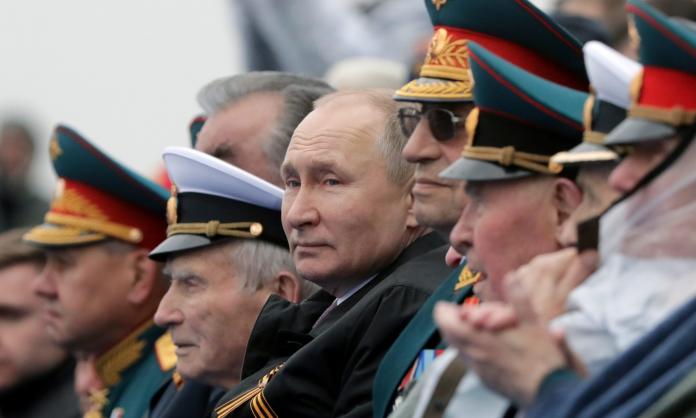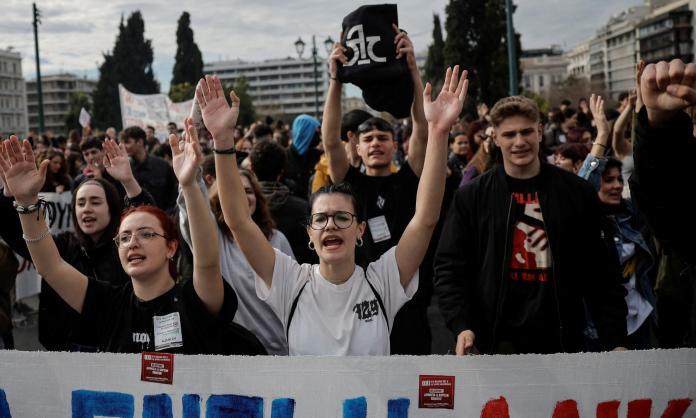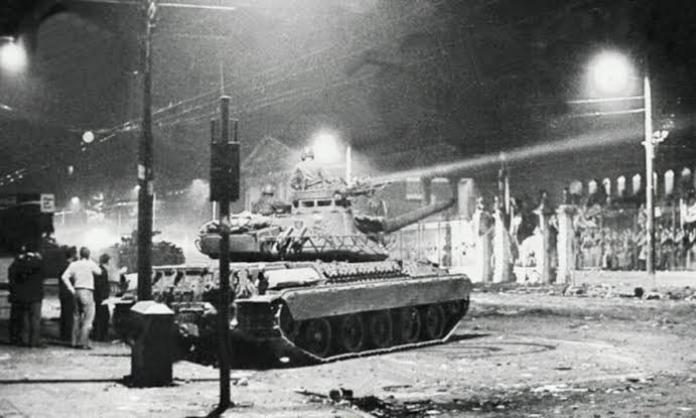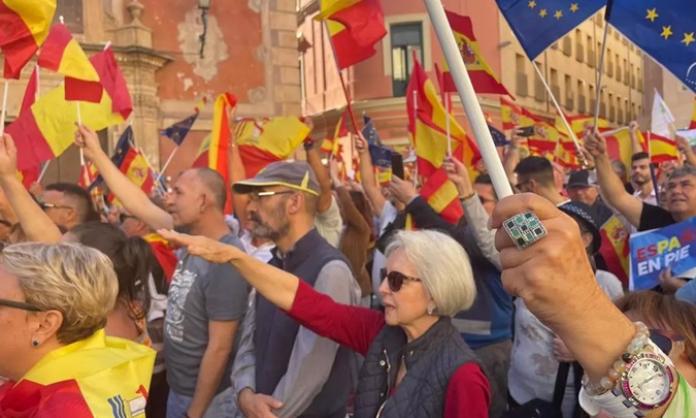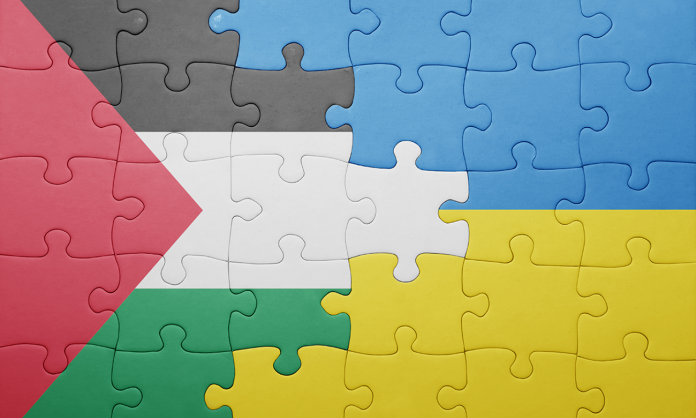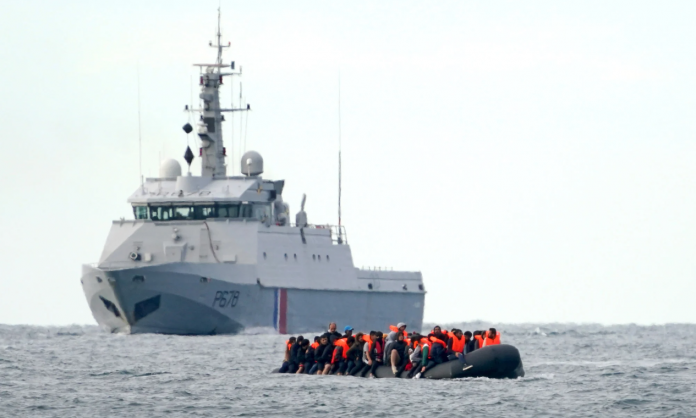There are many competing explanations for Russia’s invasion of Ukraine. But the decision can be understood only with reference to the imperialist competition that dominates the world system. Russia invaded to try to boost its position in the imperialist pecking order. Far from elevating the country’s position, however, it has so far done more to reveal the limits of Russian power. Meanwhile the US, which has seen its prestige slipping in the past two decades, is making the most of Russia’s failure.
Imperialism
The media and politicians have a ready supply of theories about the Ukraine invasion. Some say Russian President Vladimir Putin, formerly a KGB agent, is trying to recreate the USSR, but given the state of the Russian economy and the balance of power in Europe, this hardly seems realistic. Others say that Putin is a power-hungry maniac, possibly driven mad by COVID-19, as if the invasion is due to the whims of an individual.
Then there are the explanations circulating in some left circles: that Russia has supposedly been driven to invade Ukraine because NATO encirclement left it no other option, and that the invasion is therefore somehow understandable. The reality is that this is an act of imperialist aggression that has to be understood in the context of the wider tensions between competing world powers.
The Russian revolutionary Vladimir Lenin argued 100 years ago that advanced capitalism was racked by conflict between the major powers, each eager to grab a bigger share of world markets and power, arising from the competitive, dog-eat-dog dynamic of capitalism. Imperialist countries invade weaker nations and try to impose their rule over them. Once the world is divided up by the great powers, one imperialist’s gain can come only at the expense of another. That is the nub of the matter today.
Russia is a relatively weak power among the dominant imperialist nations. Its weakness makes it more aggressive because lower-order imperialists can enhance their status only by disrupting the status quo. If Russia can convert Ukraine into its satellite, that will enhance its global power and lift it in the imperialist hierarchy. But doing so means going to war.
The US and NATO, by contrast, can give the appearance of behaving defensively, simply upholding the status quo against military aggression. But their apparent defensive posture appears so only because the US and its close allies already control large swathes of the world. The so-called “rules-based international order”, which the US says it upholds, is just another name for America’s economic, legal and financial hegemony, with the “rules” written for its benefit. This “order” allows it oftentimes to bring other nations to heel even without mobilising its military. Although of course, as in Iraq and Afghanistan, it does that as well.
China has replaced Russia as the main challenge to America’s “rules-based order”, but Russia’s attempt to restore its former glory is a challenge as well. Even if these disputes between the rival imperialists do not lead automatically to a war between them, the imperialist contest must frame our understanding of the current situation in Europe and rising tensions in Asia.
Putin’s agenda
Vladimir Putin, appointed prime minister in 1998 and elected president in 2000, was determined to arrest the collapse of Russian power that occurred in the 1990s following the fall of the Soviet Union. He ordered the army into Chechnya in late 1999 to smash the national resistance there. Thousands died but Russian rule was restored.
Rising oil and gas prices in the 2000s boosted the Russian economy and helped the government build one of the world’s biggest foreign currency and gold reserves. Economic growth up until 2014 allowed Moscow to spend more on its military, particularly its nuclear arsenal. It also created support for Putin among sections of the population, particularly pensioners who had lived through the “hungry 1990s” but were now enjoying higher pensions, and consolidated a layer of loyal oligarchs and senior state officials.
These developments allowed Putin to rebuild influence beyond Russia’s borders. In Syria in 2015, the Russian air force, working closely with Iranian government militias, pulverised the rebels who had risen up against the dictatorial President Bashir al-Assad. Thousands of civilians died from the bombardment, and millions were displaced. The grateful Assad gave Russia permission to expand its naval base in the port of Tartus to equip it to handle bigger warships.
In Libya in the same year, Russia threw its weight behind a powerful warlord, General Khalifa Haftar, chief of the Libyan National Army and a rival to the NATO-backed government based in the capital Tripoli. Russia is hoping that its military aid will persuade Haftar to grant it access to Libya’s deep-water ports, along with the two air bases Russia is already using.
A Russian mercenary firm, the Wagner Group, run by close Putin ally Yevgeny Prigozhin, works as an extension of Russian military power in Africa. The Wagner Group trains the armies of several African governments in the use of Russian-supplied weapons, actively fights Islamist forces that have become a threat to these governments and supplies bodyguards and security advisers to loyal presidents and prime ministers. These are in the service of Russia’s oligarchs, protecting their investments in the continent’s extractive industries, including diamonds, gold and gas.
Russia retains one of the world’s deadliest nuclear arsenals and is one of the world’s biggest arms suppliers. It accounts for more than 60 percent of India’s arms imports; China, Vietnam and Iraq are also big customers. Russia’s oil exports give the country leverage in OPEC.
Seeking to balance against the US, Russia has sought closer relations with China and on the eve of the Beijing Winter Olympics this year, presidents Putin and Xi ostentatiously announced what they called “a friendship without limits”. Russia has also attempted to undermine Europe’s political establishment by backing a range of right-wing individuals and parties, including Marine Le Pen in France and the Alternativ für Deutschland in Germany, along with Hungary’s “strong man” Prime Minister Viktor Orban. Finally, the Putin government has tried to extend Russia’s disruptive power overseas through cyber-attacks on its rivals, targeting governments, political parties and companies, along with power grids, banking systems and other vital infrastructure.
These developments demonstrate that Russian imperialism is not simply “reactive” or defensive. Like any imperialist power, it is trying to extend its geopolitical reach. Sometimes this may be driven by straightforward financial interests, but what matters ultimately is the country’s overall economic, political and military footprint in a world where to weaken is to perish.
Russia’s weaknesses are, nonetheless, still very apparent. Most obviously, it is still a fairly poor country that has slid down economic rankings and been overtaken by countries once far poorer. Its manufacturing industry was dismantled in the 1990s and, outside a few sectors, has not recovered, leaving an economy dangerously dependent on fossil fuels. Outside energy and arms production, few Russian companies make an impact on world markets. Healthcare, social services and the environment are all in very poor condition. Inequality is severe: at 46 percent, the share of income accounted for by the top 10 percent of the population is twice as high as in 1990 and substantially higher than the EU average of 35 percent. Incomes of most of the population have stagnated since 2013. The concentration of wealth is still higher. As a result, the support Putin enjoyed in the 2000s has been eroded in the past decade.
Putin has increasingly relied on bombastic nationalism to deflect from poor living standards. Power has been centralised to a narrow clique around Putin, who, other than rhetoric about Great Russia and its mighty past, has less and less to offer the Russian people. State repression has driven opposition underground, making Putin’s regular election triumphs more a sign of his success in crushing dissent than of winning support.
Russia faces difficulties abroad as well. It has few solid allies. Its attempt to replace the old Soviet structures with the Commonwealth of Independent States and its military arm the Collective Security Treaty Organization, has failed to bring more than a few poor countries in the Caucasus and Central Asia, together with neighbouring Belarus, into its sphere of influence. Its replacement for the old COMECON, the Eurasian Economic Union, has fared little better.
Russia has failed to make itself an economic pole of attraction. In its heyday, the USSR dominated the trading patterns of its neighbours. Since the collapse of the Soviet Union, the European Union has exerted a much greater pull on them: the EU now accounts for about half of imports and exports in each case, with Russia just 15 percent. China too is elbowing Russia aside in countries with which it has historically had close relations, including Serbia and Kazakhstan. Relations with China itself have completely reversed from the old Soviet days, when China stood in Russia’s shadow. Now it is Russia that must defer to its eastern neighbour because China’s explosive economic growth has left Russia far behind.
In short, Russia suffers significant domestic problems and has had little success in imposing itself on its neighbours. These factors help explain why it has been forced to place such reliance on its armed forces to promote its international interests. This year, the dangers of this have been ruthlessly exposed.
Relations with the West
Western media routinely describe Putin as the “new Hitler”, while Putin scorns the West as morally corrupted and in terminal decline. But relations between Putin and the West were not always like this. Shortly before assuming the presidency for the first time in 2000, Putin told British interviewer David Frost “I cannot imagine my own country in isolation from Europe and what we often call the civilised world”. Could Russia join NATO? “I don’t see why not. I would not rule out such a possibility”. The US reciprocated these warm feelings. Putin was, as US President Bill Clinton explained in 2000, “a man we can do business with”. Flagship publications such as the New York Times similarly admired him.
The two sides worked together on a range of fronts. Early on, they realised their common interest in the “War on Terror”, which served both to legitimise Russia’s destruction of Chechnya and the US’s invasion of Afghanistan. Putin repeatedly expressed his desire for closer integration with Europe, with which, he said, Russia shared “ideals of freedom, human rights, justice and democracy”. The World Bank gave Putin its tick of approval as a bulwark against any return to a centrally planned economy. In 2011, Russia gave NATO diplomatic cover, abstaining in a UN Security Council vote giving Britain and France the opportunity to impose a no-fly zone over Libya, signalling the imminent downfall of Russia’s one-time Libyan ally, President Muammar Gaddafi. In 2013, Russia’s foreign policy made “relations with Euro-Atlantic states” a top priority, and as late as 2015, Putin was still pushing for an anti-terror alliance with the West.
Then there were the close personal connections between the elites. Many Russian oligarchs owed their fortunes to the Western architects of the Yeltsin government’s mass sell-off of government assets in the 1990s. The newly enriched businessmen piled their money into London and New York real estate, companies, bank accounts and football teams. They donated money to political parties and in return were warmly welcomed at social events and given passports and titles.
There are no principled differences, then, between Putin’s Russia and the West. There is no clear line, as US President Joe Biden claims, between “absolutism” and “democracy”, merely an assessment by each imperialist camp of what will advantage it. This also explains why these relatively cordial relations have given way in more recent years to greater acrimony.
The collapse of the USSR offered the West the opportunity to expand its sphere of influence in Europe. The West grabbed it with both hands, over time expanding NATO to incorporate fifteen new member states, eleven countries formerly part of the Warsaw Pact and four countries that had once been Soviet republics. The new member states were almost without exception enthusiastically pro-American and hostile to Russia. Russia was forced to accept the situation because it was too weak to stop it. It was eager to find a place in what was still a US-dominated European and world order and yet it was also refused admission: NATO rejected Russia’s overtures to join, as well as its attempts at greater economic integration into Europe and its proposal to form a joint anti-terror alliance. NATO’s consistent snubbing caused growing Russian resentment. Recognising this fact does not justify Russia’s invasion of Ukraine, but it provides context. Two imperialist blocs are unable to share power in Europe, making conflict inevitable.
Imperialist conflict began to heat up in 2007-08. In February 2007, in a landmark speech at the Munich Conference on Security Policy, Putin vigorously criticised US aggression in international relations. In April 2008, at a NATO summit in Bucharest, US President George W. Bush raised the prospect of membership for Russia’s neighbours Georgia and Ukraine—only to defer it in the face of Putin’s strenuous objections. Georgia, however, took the NATO summit as a green light to attack the separatist Russian-speaking region of South Ossetia. Russia retaliated, using the language NATO had used to justify its support for its bombing of Serbia in 1999—“responsibility to protect”—and sent its army into not just South Ossetia but Abkhazia too, driving out the Georgian forces within five days. Still bogged down in the Middle East, the US could only stand and watch, allowing Russia a notable victory that sent a clear message that it was prepared to use military force to prevent further NATO expansion in its region.
Georgia marked the beginning of a more ambitious Russia. Foreign adventures offered a way to whip up nationalism and to demonise internal opposition as unpatriotic. Military deployments also gave Russia the opportunity to test the country’s new military equipment.
In 2014, Ukraine became the front line in the growing Russia-NATO conflict. The country is a rich prize with extensive mineral assets, including neon gas and krypton, necessary for the production of semiconductors. Ukraine is also a major wheat producer and has immense strategic importance to Russia. The immediate contest was whether Ukraine would look towards the European Union or Russia’s Eurasian Economic Community.
The Ukrainian population were not prepared to be passive bystanders in this fight. The appeal of the much wealthier EU was considerably stronger, even if EU membership was still a distant prospect. And so, following a decision by Russia-aligned President Viktor Yanukovych to abandon Ukraine’s application to join the EU and to join the Russian economic bloc instead, thousands took to the streets to protest. Violent repression swelled the crowds, which then occupied Independence Square in central Kyiv. They were motivated not primarily to join a military bloc—support for NATO membership was still a minority position—but for an end to corruption and an improvement in living standards, which were and are among the lowest in Europe. Unfortunately, in the absence of any significant left forces, the right had free rein to whip up a reactionary atmosphere in the square, cultivating hostility to the country’s Russian-speaking minority, who they referred to as colonisers. After three months of protest, Yanukovych was forced to flee and, after a stop-gap president, the pro-EU businessman Petro Poroshenko took over.
In retaliation for the humiliation of Russia’s favoured president, Putin ordered Russian special forces into Ukraine’s Donbas region, where they backed right-wing Russian-speaking separatists fighting the government. Together they easily defeated attempts by the Ukraine army to drive them back, and the subsequent Minsk 2 peace agreement gave substantial autonomy to the separatists in the east and, thus, greater Russian influence. At the same time, Russian soldiers entered and occupied Crimea in Ukraine’s south, leading to Crimea’s annexation by Russia and the return of the Black Sea naval base in Sevastopol to Russian hands.
In response, the US, EU, Canada and others imposed sanctions on dozens of high-ranking friends of Putin, choking foreign investment in Russia. These sanctions have been extended and renewed several times, most dramatically in the spring of 2018, after the attempted killing of a former Russian spy in the UK.
Taken together, these developments ended the fantasy of Russian integration or alliance with the West, and signalled a shift to a more confrontational stance. This has been reflected in successive defence and national security reports published by the US and Russian governments, which identify the other power as a growing threat.
The invasion of Ukraine
Russia’s invasion of Ukraine must be understood in this broader context of global imperialist competition. It is not, as Russia’s apologists claim, a direct consequence of NATO expansion. There was no immediate Western threat to Russia in February: NATO was not about to invade Russia and nor was NATO about to let Ukraine join, because it did not want to be drawn into World War III in Ukraine’s defence. Nor of course did the invasion have anything to do with protecting Russian speakers in eastern Ukraine from genocide or removing the supposedly Nazi government in Kyiv, two lies used by Putin to justify it. It is really about Russia’s desire to recover its status as a world power, and Ukraine is a stepping stone in that project.
The invasion is a test of Russian imperialism, but one that Russia appears so far to be failing. Putin and the generals believed they would score a quick victory in Ukraine. They believed that the US was a fading power, undermined by failures in Iraq and Afghanistan, plagued by internal instability and political polarisation and therefore reluctant to oppose Russia with much more than words. They believed that Biden, with approval ratings in January among the worst in postwar American history, would want to focus on his contested Congressional agenda and the disastrous winter COVID-19 outbreak at home.
Putin also believed that NATO was too divided to resist Russia’s invasion. The Trump administration had openly scorned NATO, calling it obsolete, poisoning relations between Europe and the US. Germany, it was believed, would not be a reliable military partner for the US in Eastern Europe, given its close economic connections with Russia and its longstanding positioning as a bridge between Russia and the US. Following their meeting in Beijing in February, Putin might have believed that the invasion would receive strong support from China and assistance in providing markets and finance to offset the impact of Western sanctions. Putin probably also believed that Russia’s military would be capable of defeating Ukraine, a poor country with fewer resources at hand and which Russia had decisively beaten in the Donbas in 2014. And possibly the Russian president really did believe that Ukrainians would welcome the invasion.
None of these beliefs proved correct. Russia is facing opposition on all fronts and serious internal problems. Militarily, Russian forces are having difficulty taking major cities. Their tanks and armoured vehicles lie abandoned or destroyed in their hundreds. Their nuclear arsenal affords them protection against US attack, but doesn’t help conquer Ukrainian territory. Morale among soldiers seems to be low and food, fuel and ammunition in short supply. Thousands of Russian soldiers have been killed. A leaked figure in late March of a little under 10,000 deaths has been denied by the Russian government, but even if that is exaggerated, the real figure will be well above the official death count. It is possible that by the time the war is over, the death toll could approach the 14,000 losses Russia suffered during its nine-year occupation of Afghanistan, something widely considered a military disaster and credited with contributing to the collapse of the USSR.
The invasion has rallied the Ukrainian population, including the Russian-speaking minority, against Russia. The president, who was suffering poor polling last year, is now very popular. The Ukrainian armed forces appear to have acquitted themselves well. There seems little chance Russia can impose a puppet government in Kyiv that would not be reliant on massive Russian military support, which would then be the target of a popular insurgency.
At home, the war in Ukraine is spurring discontent. Putin made no attempt to soften up the population for war and established no credible casus belli. The economy faces the prospect of serious recession if the war drags on. The loss of life and the growing economic turmoil resulting from the war and Western financial sanctions are taking their toll.
State media call the invasion a “special military operation”, but millions of people will be getting a much clearer picture of the situation from contacts either involved in the fighting or affected by it. It is difficult to get a gauge on public opinion, but limited polling by the liberal opposition suggests initial support for the war is slipping, particularly among those on lower incomes. Failure to accomplish a solid victory in Ukraine will damage support for Putin, and his removal by a palace coup or even by a popular revolt cannot be ruled out. Little wonder that Putin is now cracking down mercilessly on those he calls “national traitors” and “fifth columnists” who oppose the war.
Far from being weakened by Russia’s attack on Ukraine, NATO has now become more unified behind the US. Europe has also followed the US lead on financial sanctions, which are far more extensive than have ever been levied against another major power. Very significantly, Germany has abandoned its attempt to bridge between NATO and Russia and is more firmly committed to the US-led contest with Russia. It has announced plans to double military spending and is now allowing NATO weapons to pass through Germany. It has suspended the NordStream II gas pipeline, even if it is also pushing back against US attempts to force NATO members to join its Russian oil and gas boycott. Other countries are lining up to join NATO. And for the Boris Johnson government in Britain, the war has distracted from its domestic political crises.
Russia’s difficulties in Ukraine and the West’s response are also pushing China to adopt more measured language towards its “friend without limits”. The US has told China that any attempt to circumvent sanctions, let alone to supply weapons to Russia, would be met with sanctions on China. And while China might have hoped that Russia’s invasion would distract the US from its military build-up in the Indo-Pacific, it is equally plausible that the rearming of NATO’s European member states might free the US to concentrate on Asia.
The invasion has also made clear to China the potential consequences of invading Taiwan. The difficulty Russia has had in seizing control of Ukrainian cities will be nothing compared to the problems involved in mounting an amphibious invasion of Taiwan. And the Ukrainian resistance has given China some idea of the widespread popular resistance that will likely confront any invasion of Taiwan. This gives China more reasons to delay such an attack, removing a cause for US concern for now.
Russia’s invasion of Ukraine is one of the most important geopolitical developments since the end of the Cold War. It was meant to signal Russia’s determination to find a place in the emerging multipolar world, along with the US, China, India and the EU, each with its sphere of influence. It has instead demonstrated Russia’s limited power and, unless the military situation is turned around quickly, potentially represents a big setback in its claims for regional hegemony, let alone any global ambitions. It has also allowed the US to recover ground lost following its debacles in the Middle East and years of prickly relations with big European member states.
The situation is nevertheless very dangerous. The conflict is one indication of increasing tensions around the globe, from Taiwan to the South China Sea to Yemen, to ongoing conflicts between India and Pakistan, Saudi Arabia and Iran. America’s close allies in Asia, Australia and Japan, are using Russia’s invasion of Ukraine to justify expanding their own military spending in preparation for a war with China. Australian Prime Minister Scott Morrison takes every opportunity to link China with Russia as a way of further bolstering domestic hostility to China, which is growing.
The example of Europe in the summer of 1914 shows that disputes in one corner of the world can escalate quickly. The US and Russia may not go to war over Ukraine, but the possibility cannot be ruled out, and nor the use of nuclear weapons. Imperialism is only bringing us more conflict, death and destruction as well as ever increasing military budgets at the expense of healthcare, social services and welfare. It cannot exist without destroying human life. Here in Australia, both Morrison and Albanese are committed to fighting a war against China at some point in the coming years. We have to stand in their way by creating the biggest anti-war movement possible and a socialist organisation that can fight to smash imperialism and all wars.




